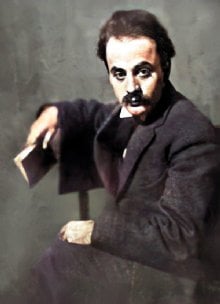Overview
Kahlil Gibran’s The Garden of the Prophet, published posthumously in 1933, returns to the voice and figure of Almustafa, the sage of The Prophet, and places him in a more intimate setting. Whereas the earlier book unfolds as public addresses to a city at the moment of parting, this sequel is a contemplative homecoming. Almustafa has crossed the sea and reached the island of his birth, where a walled garden becomes the space for renewed teaching. The book is part prose poem, part parable cycle, and it extends Gibran’s spiritual vision from civic and social concerns to the inward cultivation of the soul in harmony with nature.
Narrative and Structure
The narrative is slender and deliberately unobtrusive. Almustafa arrives quietly and finds refuge in a garden that once sheltered his childhood, a place of trees, soil, and the temporal rhythms of light and wind. A small circle of seekers discovers him and gathers in the shade to converse. Instead of formal sermons, their exchanges unfold as meditations prompted by simple things at hand: the bending of a branch, the sound of the sea beyond the walls, the fragrance of earth after rain. Each dialogue becomes a gateway to a theme, love, freedom, work, prayer, beauty, time, death, yet the movement from topic to topic feels like a walk through beds and pathways, returning and circling rather than advancing toward a single destination. By the close, Almustafa, having planted what he calls living seeds in his listeners, takes his leave once more, not with spectacle but with the calm of someone entrusting a garden to patient hands.
Themes
The garden itself is the master symbol. It suggests human life as ground to be tilled, weeded, watered, and made hospitable to light. Almustafa refuses the temptation to hand down fixed doctrines; he urges his companions to discover the springs within and to meet the seasons of the soul with trust. Nature is not backdrop but kin. Trees, birds, and winds bear wisdom if approached with gratitude, and the cycles of growth and decay teach the unity of opposites: joy braided with sorrow, freedom bound to responsibility, solitude deepening fellowship. Time is felt not as a tyrant but as a gardener’s calendar, where patience outlasts haste and ripeness comes in its hour. Death is treated as a returning, a loosening back into the larger life that has always held us, less an end than a widening of the circle. Throughout, Almustafa insists that love is the power that makes cultivation possible, ardent yet discerning, generous yet rooted.
Style and Voice
Gibran’s prose retains its lyrical cadence, biblical in its rhythms, simple in diction, and resonant with metaphor, but the tone is quieter and more inward than in The Prophet. The dialogues invite participation; the disciples’ questions shape the flow, and the imagery invites seeing rather than merely assenting. Personifications of earth and sea lend the book a pantheistic shimmer without collapsing distinctions: the sacred is near, immanent in ordinary phenomena. The result feels less like a discourse delivered from a ship’s deck and more like a conversation under leaves that move.
Publication and Legacy
The Garden of the Prophet was prepared from Gibran’s papers after his death and brought to press with the help of his close circle, including Barbara Young. It stands as the middle panel of a projected triptych that began with The Prophet and envisioned a final meditation on departure. Readers have often encountered it as a companion text rather than a sequel that seeks to surpass its predecessor. Its distinct contribution lies in translating Gibran’s universalism into the idiom of place: soil, weather, season, and care. In doing so, it turns transcendence into stewardship and leaves its audience with a charge as gentle as it is demanding, to tend the inner plot so that the world beyond the walls may bloom.
The Garden of the Prophet
The Garden of the Prophet is a sequel to The Prophet and follows the story of Almustafa after his return to his homeland. He shares his wisdom and experiences while reflecting on the beauty and lessons he has discovered in the natural world.
Author: Kahlil Gibran
 Kahlil Gibran, influential Lebanese-American artist, author of The Prophet, and significant 20th-century intellectual.
Kahlil Gibran, influential Lebanese-American artist, author of The Prophet, and significant 20th-century intellectual.
More about Kahlil Gibran
 Kahlil Gibran, influential Lebanese-American artist, author of The Prophet, and significant 20th-century intellectual.
Kahlil Gibran, influential Lebanese-American artist, author of The Prophet, and significant 20th-century intellectual.